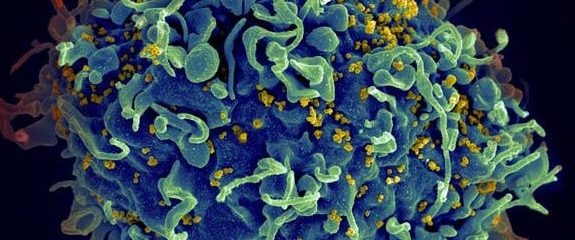Immune Cells Can Deliver Deadly Packages

For HIV to develop into full-blown AIDS, the virus must deplete a subset of immune cells called CD4+ T cells, disabling an infected person’s adaptive immune system in the process. The details of precisely how HIV kills these T cells have only recently come to light, and a study published in Cell Reports last month (August 27) suggests the process differs from what many scientists expected. Researchers have found that the virus is most deadly to CD4+ T cells when it is transferred from active cells to resting ones.
“What our data show is that the major mechanism underlying CD4+ T cell depletion . . . requires cell-to-cell transmission,” said study coauthor Warner Greene, an immunologist at the Gladstone Institute of Virology and Immunology and the University of California, San Francisco.
Although HIV researchers knew that intracellular transmission of the virus is a 100- to 1,000-times more-efficient means of infection than exposure to free particles called virions, Greene and his colleagues have now shown that cell-to-cell transmission is also more likely to lead to CD4+ T cell death. The team’s results hint that, at least in lymphoid tissues, cell-to-cell HIV transmission may be the main means of CD4+ T cell depletion.


